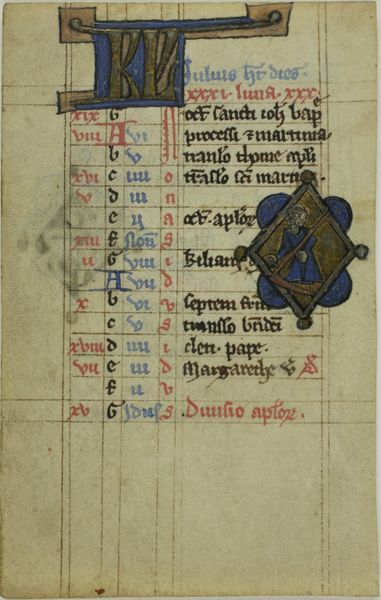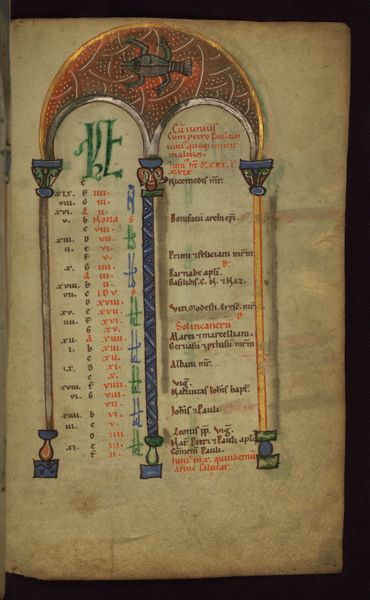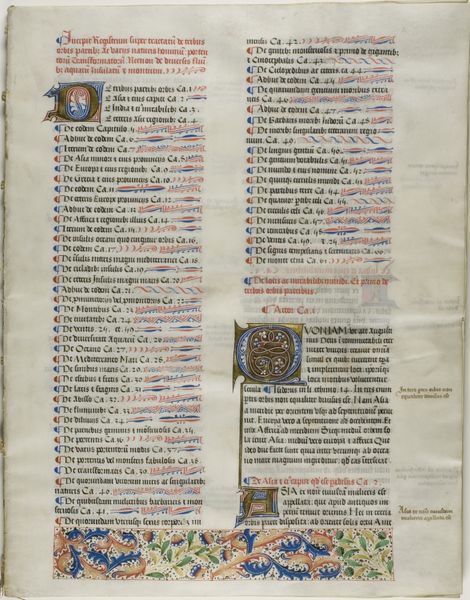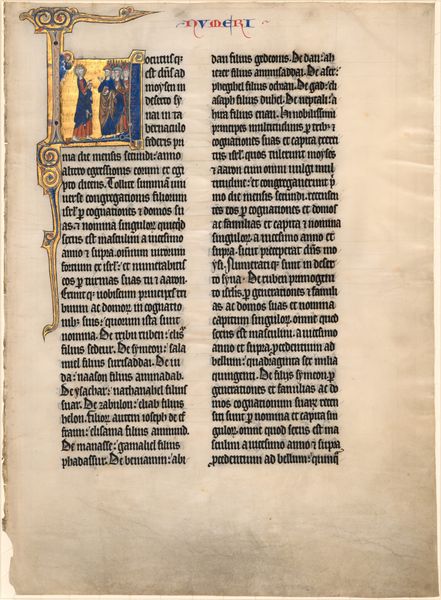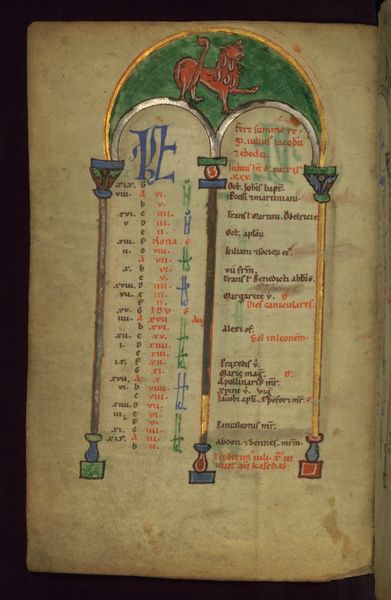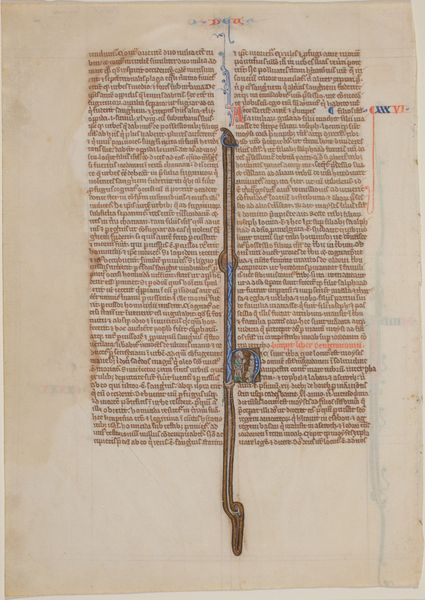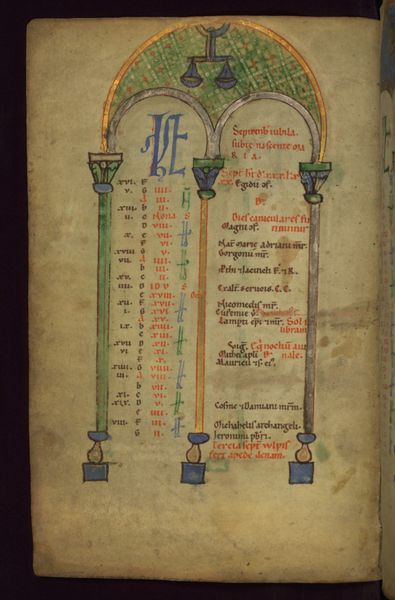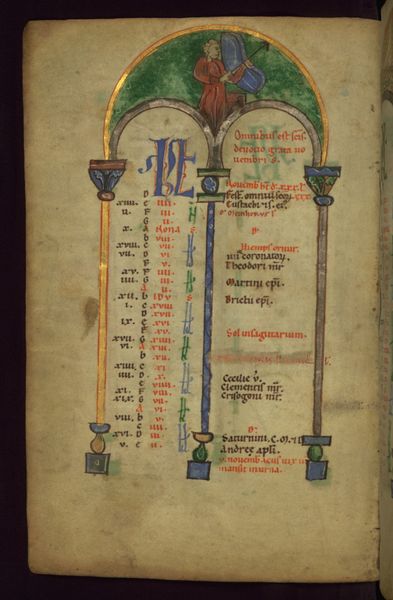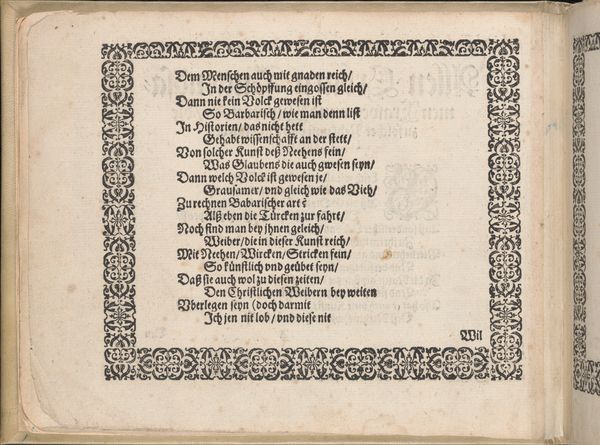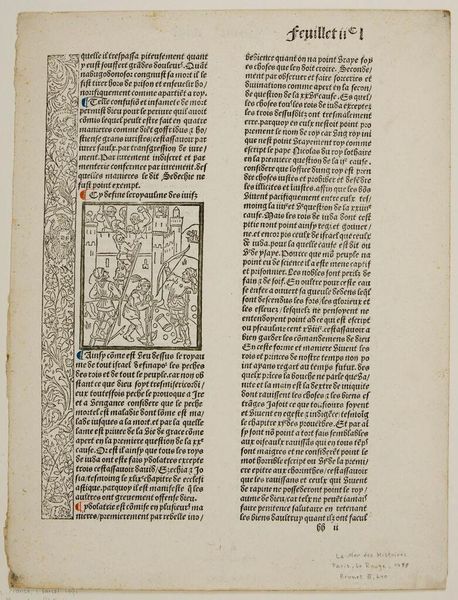
drawing, paper, ink
#
drawing
#
medieval
#
paper
#
ink
#
miniature
#
calligraphy
Dimensions: overall: 11 x 8 cm (4 5/16 x 3 1/8 in.)
Copyright: National Gallery of Art: CC0 1.0
Editor: This is a page from a Book of Hours, created around 1400 by an anonymous artist. It’s ink and drawing on paper. I'm really struck by how dense the text is and the care taken with the calligraphy, a beautiful script using both red and black inks! What stands out to you about it? Curator: It’s precisely that interplay of script and materiality I find fascinating. Think about the production of this single page. Someone prepared the paper – likely animal vellum – and created the inks. The lettering itself speaks to the intense labor involved. Editor: Labor, definitely! It looks incredibly painstaking. Curator: Exactly. Consider the social context. Books of Hours were luxury items. So who was consuming them, and at whose expense were these items produced? The use of precious materials indicates the patron's status and wealth, which rested on specific structures of labour and power. Editor: So the materials and labor tell a story about the economics of the time? Curator: Absolutely. Even the wear and tear, the foxing on the paper, it all adds to that narrative. This object speaks to the relationships of production of late medieval society. It isn't just an image; it’s a product with inherent cultural weight. Editor: I hadn’t really considered it in that light. It makes you think about the lives of everyone involved in making it. Curator: Indeed. By focusing on the materiality and means of production, we challenge traditional notions of art as separate from labor and broader societal structures. What’s your take away from that angle? Editor: Looking at it as a material object embedded in a complex social context definitely gives it a new level of depth. It isn’t just about the image; it is also about all of the makers behind it.
Comments
No comments
Be the first to comment and join the conversation on the ultimate creative platform.
